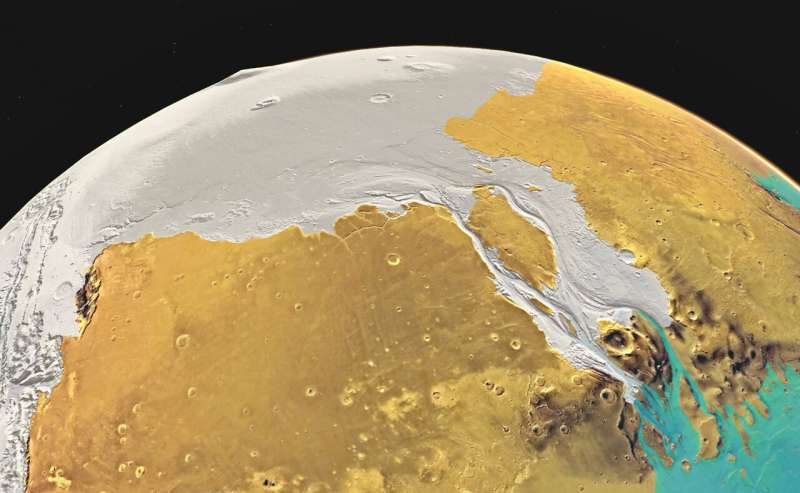January 19, 2022 report
Simulation shows Mars could have been cold and wet three billion years ago

A team of researchers from several institutions in France, the U.S. and Sweden has used models of possible conditions on Mars to show that the red planet may have sported a northern ocean 3 billion years ago and that the climate was likely wet and cold. In their paper published in Proceedings of the National Academy of Sciences, the group describes theories to explain conditions on the surface of Mars today, and a model that simulated a wet and cold planet.
Scientists studying Mars have been baffled by feature on the planet's surface—there exists contradictory evidence for an ocean, for example, despite ample evidence of rivers, lakes and streams. Yet, other scientists have also found evidence of tsunamis, which very strongly suggests the presence of an ocean. The researchers in this new effort suggest that part of the problem in understanding Mars' climate history lies in the thinking that for an ocean to exist, the planet must have been warm and wet, or in other scenarios, assuming that if there was no ocean, the planet was likely cold and dry. They suggest a third option—a cold and wet planet.
They suggest it was possible for an ocean to exist despite cold temperatures if there was enough hydrogen in the atmosphere. They note that if just 10 percent of the atmosphere was hydrogen (from volcanoes, perhaps, or cosmic impacts) and the rest was carbon dioxide, it would be enough to create a small greenhouse effect. Under the scenario, they note that the ocean could have been close to the freezing point, yet could still exist if circulation carried heat and if there were some amount of rainfall. They further suggest that such an ocean would likely have existed in the northern part of the planet because of the massive lowland basin there. In this case, they suggest that large portions of the southern parts of the planet would be covered with ice, with glaciers cutting out portions of the land leading to the ocean. In putting this information into their models, they found that their scenario could explain what Mars may have looked like approximately 3 billion years ago.
More information: Frédéric Schmidt et al, Circumpolar ocean stability on Mars 3 Gy ago, Proceedings of the National Academy of Sciences (2022). DOI: 10.1073/pnas.2112930118
Journal information: Proceedings of the National Academy of Sciences
© 2022 Science X Network




















